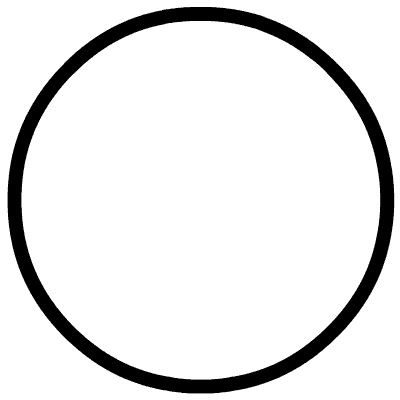vue3.2 setup 语法糖汇总
转载

作者 | 玲小叮当
前言
提示: vue3.2 版本开始才能使用语法糖!
在 Vue3.0 中变量必须 return 出来, template 中才能使用;而在 Vue3.2 中只需要在 script 标签上加上 setup 属性,无需 return , template 便可直接使用,非常的香啊!
提示:以下是本篇文章正文内容,下面案例可供参考
1、如何使用setup语法糖
只需在 script 标签上写上 setup
代码如下(示例):
<template>
</template>
<script setup>
</script>
<style scoped lang="less">
</style>
2、data数据的使用
由于 setup 不需写 return ,所以直接声明数据即可
代码如下(示例):
<script setup>
import {
ref,
reactive,
toRefs,
} from 'vue'
const data = reactive({
patternVisible: false,
debugVisible: false,
aboutExeVisible: false,
})
const content = ref('content')
//使用toRefs解构
const { patternVisible, debugVisible, aboutExeVisible } = toRefs(data)
</script>
3、method方法的使用
代码如下(示例):
<template >
<button @click="onClickHelp">系统帮助</button>
</template>
<script setup>
import {reactive} from 'vue'
const data = reactive({
aboutExeVisible: false,
})
// 点击帮助
const onClickHelp = () => {
console.log(`系统帮助`)
data.aboutExeVisible = true
}
</script>
4、watchEffect的使用
代码如下(示例):
<script setup>
import {
ref,
watchEffect,
} from 'vue'
let sum = ref(0)
watchEffect(()=>{
const x1 = sum.value
console.log('watchEffect所指定的回调执行了')
})
</script>
5、watch的使用
代码如下(示例):
<script setup>
import {
reactive,
watch,
} from 'vue'
//数据
let sum = ref(0)
let msg = ref('你好啊')
let person = reactive({
name:'张三',
age:18,
job:{
j1:{
salary:20
}
}
})
// 两种监听格式
watch([sum,msg],(newValue,oldValue)=>{
console.log('sum或msg变了',newValue,oldValue)
},{immediate:true})
watch(()=>person.job,(newValue,oldValue)=>{
console.log('person的job变化了',newValue,oldValue)
},{deep:true})
</script>
6、computed计算属性的使用
computed 计算属性有两种写法(简写和考虑读写的完整写法)
代码如下(示例):
<script setup>
import {
reactive,
computed,
} from 'vue'
//数据
let person = reactive({
firstName:'小',
lastName:'叮当'
})
// 计算属性简写
person.fullName = computed(()=>{
return person.firstName + '-' + person.lastName
})
// 完整写法
person.fullName = computed({
get(){
return person.firstName + '-' + person.lastName
},
set(value){
const nameArr = value.split('-')
person.firstName = nameArr[0]
person.lastName = nameArr[1]
}
})
</script>
7 、props父子传值的使用
子组件代码如下(示例):
<template>
<span>{{props.name}}</span>
</template>
<script setup>
import { defineProps } from 'vue'
// 声明props
const props = defineProps({
name: {
type: String,
default: '11'
}
})
// 或者
//const props = defineProps(['name'])
</script>
父组件代码如下(示例):
<template>
<child :name='name'/>
</template>
<script setup>
import {ref} from 'vue'
// 引入子组件
import child from './child.vue'
let name= ref('小叮当')
</script>
8 、emit子父传值的使用
子组件代码如下(示例):
<template>
<a-button @click="isOk">
确定
</a-button>
</template>
<script setup>
import { defineEmits } from 'vue';
// emit
const emit = defineEmits(['aboutExeVisible'])
/**
* 方法
*/
// 点击确定按钮
const isOk = () => {
emit('aboutExeVisible');
}
</script>
父组件代码如下(示例):
<template>
<AdoutExe @aboutExeVisible="aboutExeHandleCancel" />
</template>
<script setup>
import {reactive} from 'vue'
// 导入子组件
import AdoutExe from '../components/AdoutExeCom'
const data = reactive({
aboutExeVisible: false,
})
// content组件ref
// 关于系统隐藏
const aboutExeHandleCancel = () => {
data.aboutExeVisible = false
}
</script>
9、获取子组件ref变量和defineExpose暴露
即 vue2 中的获取子组件的 ref ,直接在父组件中控制子组件方法和变量的方法
子组件代码如下(示例):
<template>
<p>{{data }}</p>
</template>
<script setup>
import {
reactive,
toRefs
} from 'vue'
/**
* 数据部分
* */
const data = reactive({
modelVisible: false,
historyVisible: false,
reportVisible: false,
})
defineExpose({
...toRefs(data),
})
</script>
父组件代码如下(示例):
<template>
<button @click="onClickSetUp">点击</button>
<Content ref="content" />
</template>
<script setup>
import {ref} from 'vue'
// content组件ref
const content = ref('content')
// 点击设置
const onClickSetUp = ({ key }) => {
content.value.modelVisible = true
}
</script>
<style scoped lang="less">
</style>
10、路由useRoute和us eRouter的使用
代码如下(示例):
<script setup>
import { useRoute, useRouter } from 'vue-router'
// 声明
const route = useRoute()
const router = useRouter()
// 获取query
console.log(route.query)
// 获取params
console.log(route.params)
// 路由跳转
router.push({
path: `/index`
})
</script>
11、store仓库的使用
代码如下(示例):
<script setup>
import { useStore } from 'vuex'
import { num } from '../store/index'
const store = useStore(num)
// 获取Vuex的state
console.log(store.state.number)
// 获取Vuex的getters
console.log(store.state.getNumber)
// 提交mutations
store.commit('fnName')
// 分发actions的方法
store.dispatch('fnName')
</script>
12、await的支持
setup 语法糖中可直接使用 await ,不需要写 async , setup 会自动变成 async setup
代码如下(示例):
<script setup>
import api from '../api/Api'
const data = await Api.getData()
console.log(data)
</script>
13、provide 和 inject 祖孙传值
父组件代码如下(示例):
<template>
<AdoutExe />
</template>
<script setup>
import { ref,provide } from 'vue'
import AdoutExe from '@/components/AdoutExeCom'
let name = ref('Jerry')
// 使用provide
provide('provideState', {
name,
changeName: () => {
name.value = '小叮当'
}
})
</script>
子组件代码如下(示例):
<script setup>
import { inject } from 'vue'
const provideState = inject('provideState')
provideState.changeName()
</script>
总结
以上就是我今天与你分享的全部内容,希望对你有所帮助,如果你觉得有用的话,请记得点赞我,分享我,并将它分享给你身边做开发的朋友,也许能够帮助到他。
学习更多技能
请点击下方公众号


























